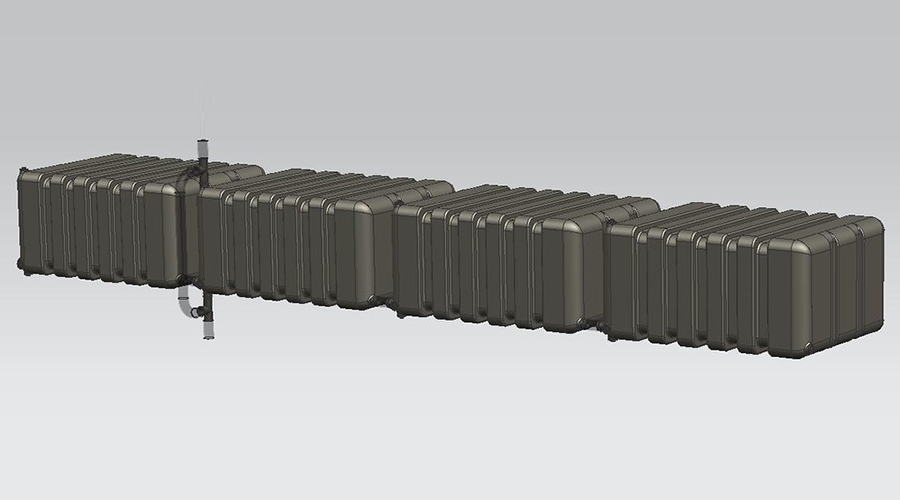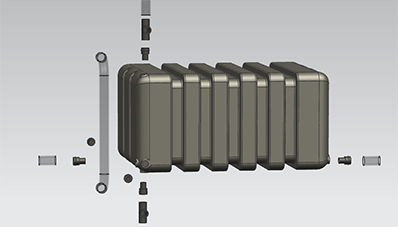LoFloA low-cost, modular water storage system that reduces the flow rate from rooftop runoff into city sewers during storms
Problem
The greater Chicago area has a combined sewage system, meaning both domestic sewage and stormwater runoffs are conveyed through the same pipe infrastructure. This configuration is problematic during significant rain events—in some locations stormwater runoff from impervious surfaces such as streets, sidewalks, parking lots, and rooftops, overwhelms the system, causing a mixture of stormwater and sewage to back up into homeowners’ basements.Such backups can affect multiple blocks of homes at a time, easily costing individuals $10,000 dollars or more in damages (from homeowners).
The purpose of this project, which was designed in the Manufacturing & Design Engineering Program, was to develop a system that could be installed on residential property, such that when used in conjunction with other stormwater runoff reduction technologies within a drainage area, could prevent the combined sewer system from becoming overwhelmed and causing backups

Solution

The final design, the Loflo, is a system of multiple tanks that collect rooftop runoff from downspouts and release it into the sewer system at a slower rate than if the water entered the system directly.
The number of tanks required per lot will be determined by the home's roof size. The modular nature of the system allows for both horizontal and vertical orientation and for above and below ground connections.
The LoFlo would come with the option of a natural stone-like façade or siding that can be easily repainted with house paint to match a house’s siding or trim if installed above ground. These design elements overcome some of consumers' typical barriers to implementation.
The LoFlo is intended to complement the district's current stormwater management efforts in the public sphere as a practical solution that can be applied to residential and small properties.
It maximizes capacity for cost and is adaptable and simple enough to be universally implemented as space allows, such as in city areas in individual yards.
AdvisersStacy Benjamin, Barbara Shwom
ProgramManufacturing & Design Engineering, Segal Design Certificate
